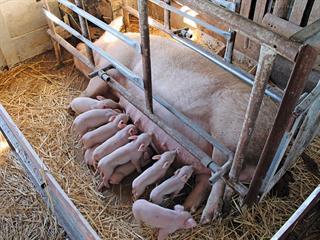One of South Africa’s largest livestock production and meat processing businesses, the Crafcor Group, has closed down most of its operations. Founded in 1980 the KwaZulu-Natal-based Crafcor Group had a turnover of over R1 billion a year in its feedlots, abattoir, hide processing and meat distribution operations.
According to the abattoir’s manager Grant Mcintosh, 626 workers have lost their jobs. He stressed that Crafcor’s decision to close some of its businesses isn’t due to insolvency, but is rather a sound business decision.
A staff of 160 have been retained to continue pig slaughtering at the Cato Ridge abattoir on behalf of two big pork-processing customers. “The return on capital employed in feedlots and meat distribution is too low when taken over the past five years. This past year was particularly bad,” said the founder and owner of the company Izak Crafford. He pointed out that feedlotting is a capital-intensive business, while in meat distribution extended credit must be given to clients in many cases. He explained that interest rates had risen sharply in recent times and would continue to rise, affecting the bottom lines of all businesses.
“The cost of feed is rising to unacceptable and unprofitable levels since the US decided to use maize for the production of ethanol,” he explained. “Feed prices have increased three times in two years. Labour costs are also increasing all the time.” Crafford said that since the disbanding of the Meat Board in 1998, livestock farmers have had little protection and no guarantee on meat prices. “It’s only the middlemen, not the producers, who benefit from so-called food price inflation,” he added.
Manie Booysen, CEO of the SA Meat Industry Company (Samic), said he didn’t believe the Crafcor closures would create a vacuum in the red meat sector. “There are also medium-scale abattoirs in the rural areas that have enough throughput from farm-fed beef and from cattle coming from the communal areas,” said Booysen. He said high beef-feed prices are likely to force some farmers to produce grass-fed beef. Such farmers might want to start using the cattle slaughtering section of the Cato Ridge abattoir again. “We’ll wait and see,” he said. – Lloyd Phillips









